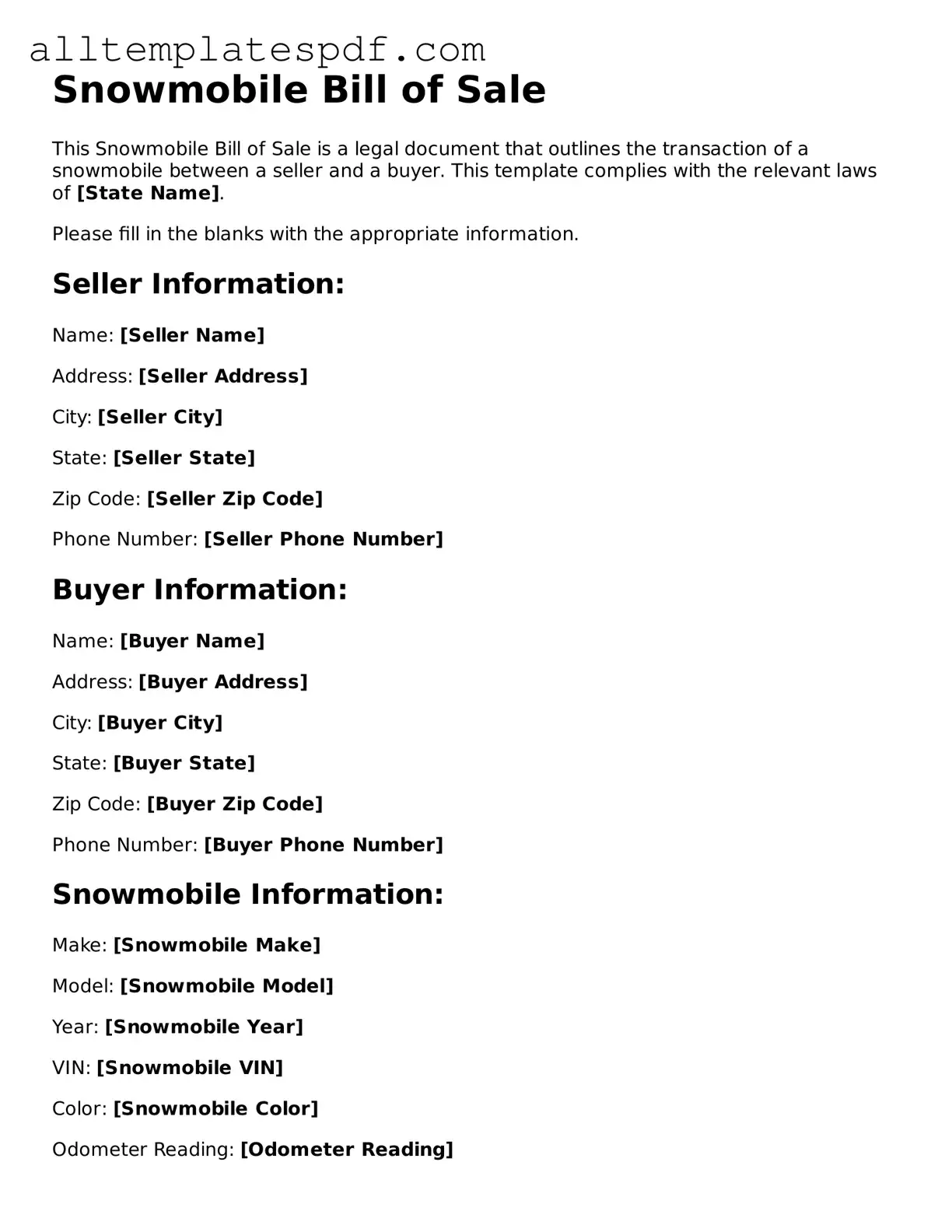Filling out the Snowmobile Bill of Sale form can be straightforward, yet many individuals make common mistakes that can lead to complications. One prevalent error is failing to include all necessary information about the snowmobile. This includes the Vehicle Identification Number (VIN), make, model, and year. Omitting any of these details can create confusion and may hinder future registration or transfer of ownership.
Another frequent mistake involves incorrect or incomplete buyer and seller information. Both parties should provide their full names, addresses, and contact information. If any of this information is missing or inaccurate, it could result in disputes or difficulties in the future. Always double-check that all names are spelled correctly and that addresses are up to date.
People often neglect to date the bill of sale. The date is crucial as it establishes when the transaction occurred. Without a date, it may be challenging to prove ownership or the timeline of the sale. This can be particularly problematic if legal issues arise later on.
Many individuals also forget to sign the document. Both the buyer and seller must sign the bill of sale to validate the transaction. A missing signature can render the document ineffective, leading to potential legal disputes over ownership.
In some cases, sellers may not disclose any liens or outstanding loans on the snowmobile. Failing to mention such financial obligations can lead to significant legal issues for the buyer. Transparency is essential in any sale; both parties should be aware of any financial encumbrances attached to the vehicle.
Another mistake is using vague language or failing to specify the terms of the sale. Clear terms regarding payment methods, delivery, and any warranties should be included. Ambiguity can lead to misunderstandings and disputes down the line.
People sometimes overlook the importance of keeping a copy of the completed bill of sale. Both the buyer and seller should retain a copy for their records. This documentation serves as proof of the transaction and can be essential for future reference, especially if any issues arise.
In addition, individuals may not research their state’s specific requirements regarding the bill of sale. Different states have varying regulations about what needs to be included in such documents. Failing to comply with state laws can lead to complications in registration or transfer of ownership.
Lastly, some individuals may rush through the process without reviewing the completed form. Taking the time to carefully review all entries can prevent errors that might otherwise lead to significant problems. It is always advisable to read through the entire document before finalizing the sale.
